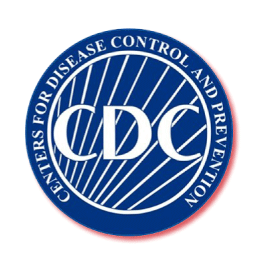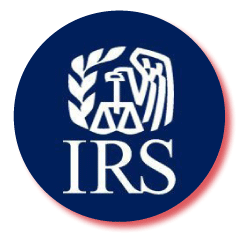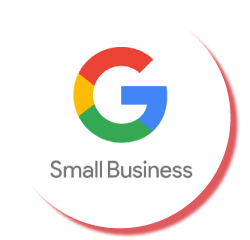How Does Your Business Survive Now? Emergency Resources for Small Business Owners.
If you own a small business, you might struggle to be profitable even at the best of times. The current COVID-19 pandemic has dialed up the stakes for most businesses in the United States and around the world. Non-essential businesses have closed their doors in an effort to halt the spread of the virus, and there is no clear end in sight. There is a glimmer of good news. There are many resources available to help small business owners in this difficult time. Some are resources that were already available in some form but have been retooled to fill the changing needs of small business owners. Here are some resources and tools that may help you.


While some big companies are asking for government handouts, others are doing what they can to help small businesses in this time of crisis. A good example is Google, which announced that it has created an $800 million commitment to help with the pandemic.
There are two key elements of the fund that apply directly to small business owners. The first is a $200 million investment that will be given to non-profit organizations and financial institutions to provide bridge loans and assistance to small businesses impacted by the pandemic.
The second is a $340 million commitment to provide Google Ads credits to every small business with an active account in the past year. The credits will appear automatically on your Google Ads account and may be used on any of Google’s advertising platforms (including YouTube) through the end of 2020.
It’s also worth mentioning that Google is providing support and funding to any manufacturing business that can retool their facilities to produce needed materials, including hand sanitizer and Personal Protective Equipment for healthcare workers.

The Small Business Administration (SBA) provides resources to small business owners all the time, including small business loans and government grants. They have some special resources for businesses impacted by the COVID-19 pandemic:
> The Economic Injury Disaster Loan Program
> SBA Express Bridge Loans
> Guidance for Businesses and Employers
> SBA Products and Resources
> Government Contracting
> Local Assistance
EIDL loans have been expanded under the CARES Act. These are low interest loans that are coordinated at the state level with the help of governors. They can provide up to $2 million in loans to businesses to help them replace revenue lost as a result of the pandemic.
Even if your business does not qualify for an EIDL, you may still be able to get a $10,000 emergency grant to help you meet your payroll commitments and other business expenses.



While many small businesses are closed with employees working from home, some are still open. Restaurants have retooled as takeout and delivery services, and some other small businesses have been identified as essential.
If your business falls into one of those categories, then the Centers for Disease Control website has a resource that you’ll need: Resources for Businesses and Employers. The page includes interim guidelines to keep your business safe, recommendations for cleaning and sanitizing your workspace, and a link out to OSHA guidelines for COVID-19.

Expanded loans and payroll protection aren’t the only things in the CARES Act designed to help small business owners. There are also several tax benefits that may help you recover lost income.
Here are a few highlights.
> The proposed bill waives tax penalties if you withdraw money from a retirement account before you reach the age of 59 ½. The waiver applies for amounts up to $100,000 and is good through the end of 2020. To qualify, you must demonstrate that you or an immediate family member were diagnosed with COVID-19 or that you experienced significant loss of income due to a layoff, reduced hours, or a business closing. You may still be required to pay income taxes depending on the type of retirement fund you have, but you can spread out the payments over three years.

– Tailor the CTA to the page it’s on
– Use strong verbs and wording that makes it clear what the user will get if they fill out your form
Your call to action should not be the only way for people to get in touch with you. You may also want to include a “Contact Us” option in your header or footer and include your email address or phone number on every page, too.
The point is, you want it to be easy for people to contact you.


While some big companies are asking for government handouts, others are doing what they can to help small businesses in this time of crisis. A good example is Google, which announced that it has created an $800 million commitment to help with the pandemic.
There are two key elements of the fund that apply directly to small business owners. The first is a $200 million investment that will be given to non-profit organizations and financial institutions to provide bridge loans and assistance to small businesses impacted by the pandemic.
The second is a $340 million commitment to provide Google Ads credits to every small business with an active account in the past year. The credits will appear automatically on your Google Ads account and may be used on any of Google’s advertising platforms (including YouTube) through the end of 2020.
It’s also worth mentioning that Google is providing support and funding to any manufacturing business that can retool their facilities to produce needed materials, including hand sanitizer and Personal Protective Equipment for healthcare workers.

Another big company that’s doing something tangible to help small businesses is Facebook, which recently announced the creation of a Small Business Grants Program.
The program will provide up to $100 million in grants to 30,000 eligible small businesses in 30 countries around the world. The grants may be cash, ad credits, or a combination of the two.
There is limited information available as of this writing, but if you click on the above link, you can sign up to receive updates and get more details as they become available.



In addition to small business relief programs at the federal level, most states have programs to help small businesses impacted by the COVID-19 pandemic. You can find a partial list in this Forbes article. It includes loan programs, grants, and other assistance.
If you don’t see your state on the list, you an either do a Google search for your state + COVID-19 relief for businesses. You can also find your state governor’s website on this page.
Keep in mind that some states may be lagging on offering assistance simply because they have not yet been as strongly impacted by the virus as places like Washington, California, and New York. Based on projections, that is going to change pretty much everywhere, so if you don’t see something now, keep checking back.

For businesses in the UK, there are several assistance programs available. There are too many to list all of them here, but some highlights include:
> Deferment of VAT and income tax payments
> A statutory Sick Pay Relief package for small
and medium-sized businesses
> Small business grants of up to £10,000 for
companies in receipt of small business or rural
rate relief
> Up to £25,000 in grants for companies in the
hospitality, leisure and retail industries
> The Coronavirus Business Interruption Loan
Scheme, which offers up to £5 million in loans to small and medium-sized businesses impacted by the pandemic
You can find a complete list of the programs and resources available on the governments dedicated COVID-19 response page here.

The Australian government has provided some resources to business owners with more expected to be announced. Here are some of the highlights of their response:
> JobKeeper payments for small businesses
> Cash flow assistance for employers
> Increased instant asset write-off for businesses
> Accelerated depreciation deductions
You can find additional details and links on the Australian Taxation Office’s website, here.

The Canadian government has responded vigorously to the pandemic, providing multiple assistance programs for businesses impacted by the outbreak. They include:
> Business Credit Availability Program to pro
vide $10 billion in loans to qualified businesses
> Enhanced Work Sharing program
> Tax deferments until August 31
> A $5 billion expansion of Farm Credit Canada
The government has also put out a call to manufacturing businesses requesting help making needed items for healthcare workers. You can find more information on this page.

In New Zealand, the following resources are available:
> A $6.25 billion Business Finance Guarantee Scheme
> A six-month principle and mortgage
payment holiday for mortgage holders and SME customers
You can find more details on the governments business response website, here.

The resources we’ve listed above are some of the most widely available and directly useful, but we also found an array of other resources that you should know about.
America’s Small Business Development Centers has created a comprehensive resource page for small businesses. It includes some of the same information we’ve covered above, as well as additional resources that you may find useful.
Small Business Majority has a collection ofresources, as well, which includes live and recorded webinars to help small business owners cope with the crisis. You can find it here.
The National Federation of Independent Business (NFIB) has a resource page that includes webinars, legal resources, FAQ, and more. You can find it here.
The ICIC has a resource page that includes webinars, a network for members, and federal and banking resources to help small businesses with their financial needs during the pandemic. You can find it here.
SCORE has a web page dedicated to pandemic-related resources for small businesses. It includes remote mentoring, webinars, and local chapter workshops and events. You can access it here.
Finally, you can access FEMA’s emergency plan for businesses here. It includes guidelines to help you plan and recover from the COVID-19 pandemic.
This list is as comprehensive as we could make it, but there are likely to be additional resources that we didn’t cover as well as new resources that become available in the coming weeks and months. We will keep you posted, but we also encourage you to seek resources on your own. If you don’t see your country represented, we suggest starting at the main government website, where you should be able to find announcements and links to resources.
The best thing you can do at this time is to educate yourself about the available resources and be as practical and calm as possible. The more you know about what’s out there, the easier it will be to choose the resources that are most helpful to you and your employees at this difficult time.


